|
LiDAR (Light Detection And Ranging) technology is utilized widely in the meteorological community for research. Lidar works by emitting low-power laser pulses into the atmosphere. The receiver then detects any back-scattered returns from the atmosphere. Unlike ceilometers, Doppler Wind Lidars (DWL) uses the same Doppler frequency shift principle as radars. Light emitted from the lidar is scattered and reflected off of particles in the air back to the receiver. From the received signal, air motion and aerosol characteristics can then be analyzed. In the Spring of 2013, SWIRLL acquired its own Doppler Wind Lidar. Mounted inside an enclosed trailer, The UAH Doppler Wind Lidar can be deployed for long-term measurements or can be deployed for one IOP. A Radiometrics 35-Channel Microwave Profile Radiometer (MPR) is mounted on the front of the trailer to provide thermodynamic profiles complementary to the lidar measurements. A sounding system is typically deployed with MoDLS to provide wind and thermodynamic comparisons. In the Spring of 2021, a flatbed pickup truck was purchased to provide a more agile platform and to improve performance in high wind conditions. This new “MoDLS 2.0” holds the DWL, MPR, and telescoping surface station tower. The truck has four hydraulic jacks mounted on it to level the truck when deployed. A recent addition to MoDLS is the Vertically Pointing Ka-Band Radar (KaPR) which works complimentary with the DWL to help retrieve drop size distributions. 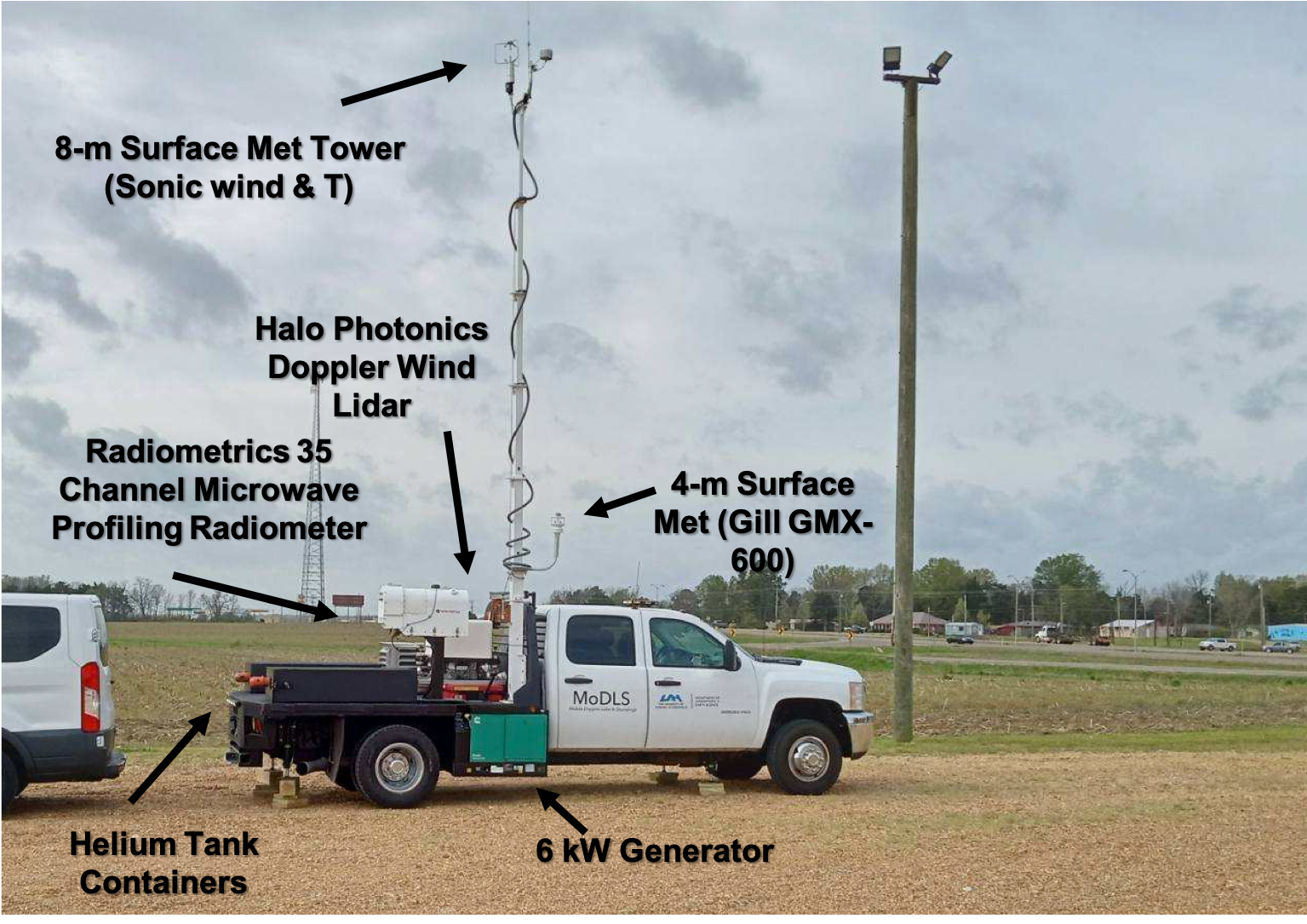
The new MoDLS truck deployed for a PERiLS deployment. |
Explore each link below to see each instrument that is on MoDLS, how it works, and what data it gathers.
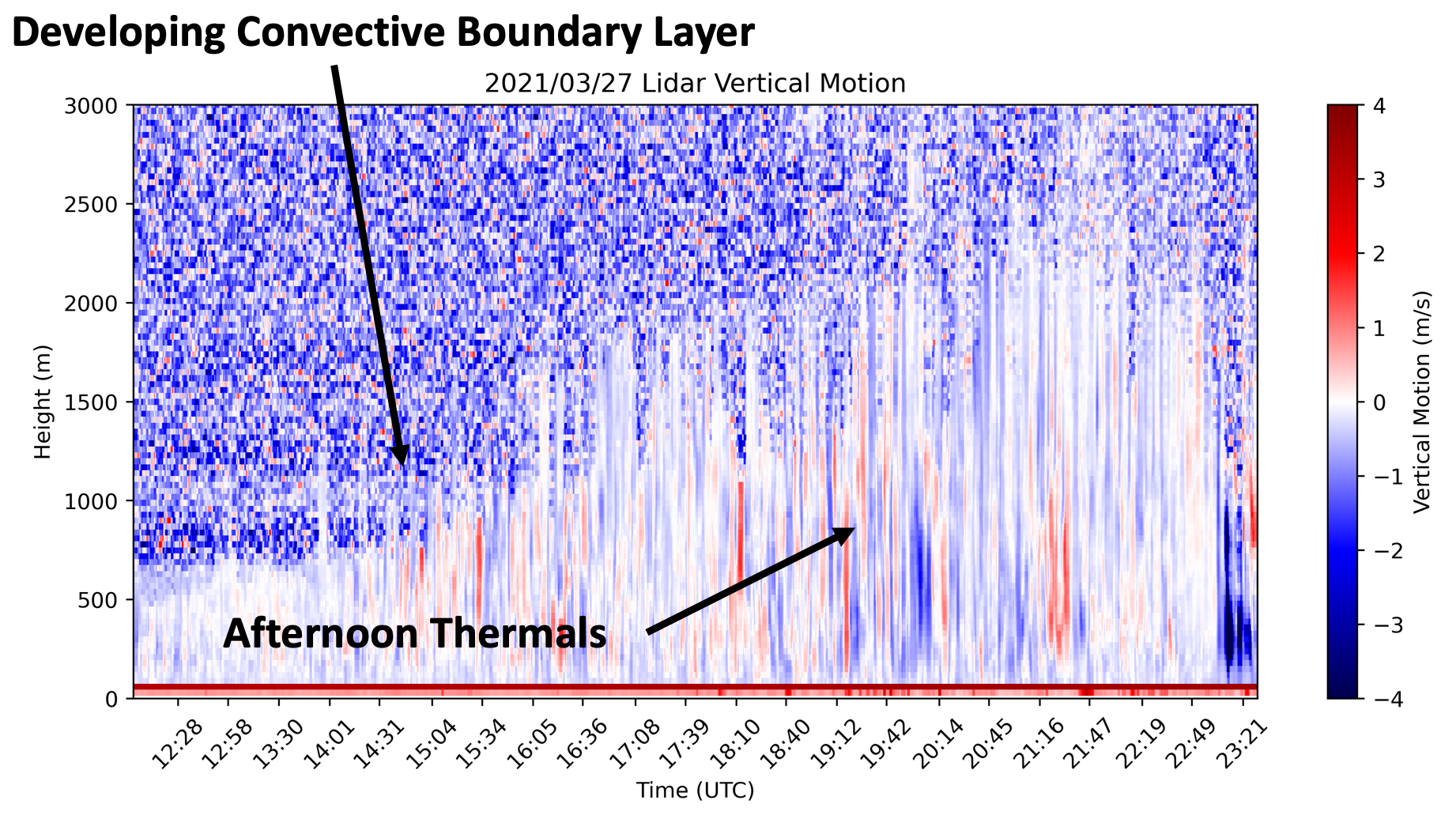
DWL velocity data from 27 March 2021 showing a building convective boundary layer and afternoon thermals. The New MoDLS Truck Build
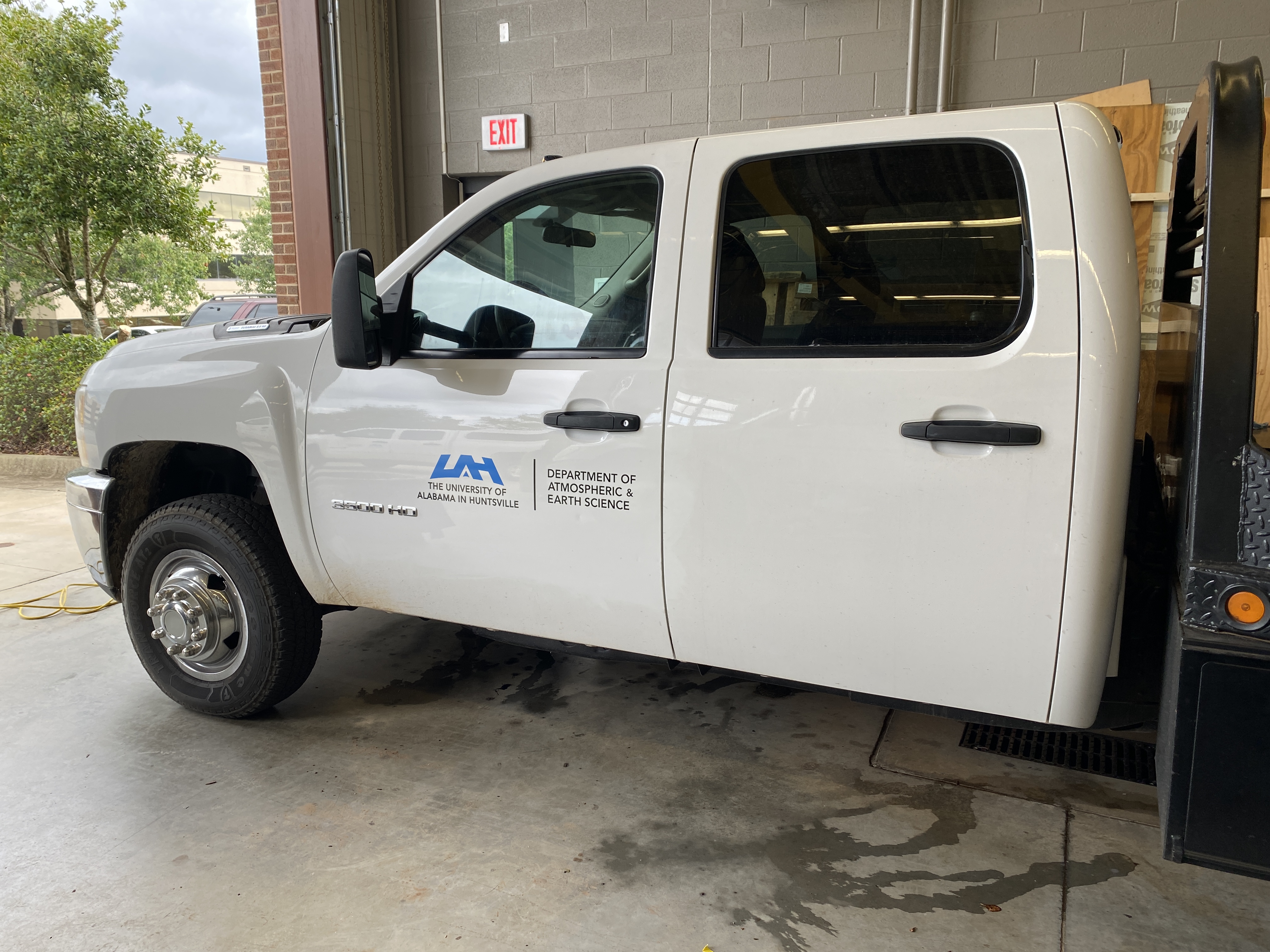
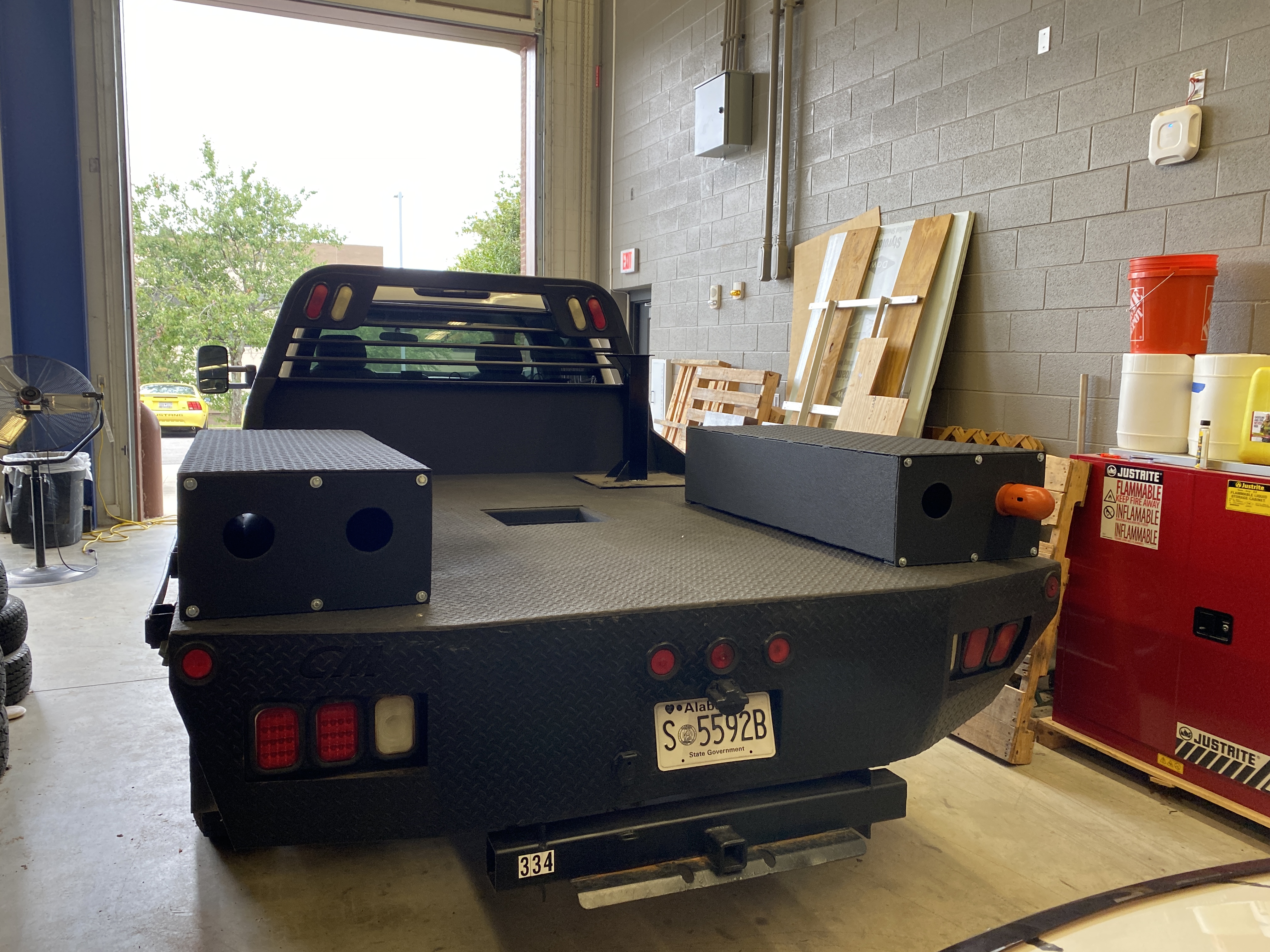
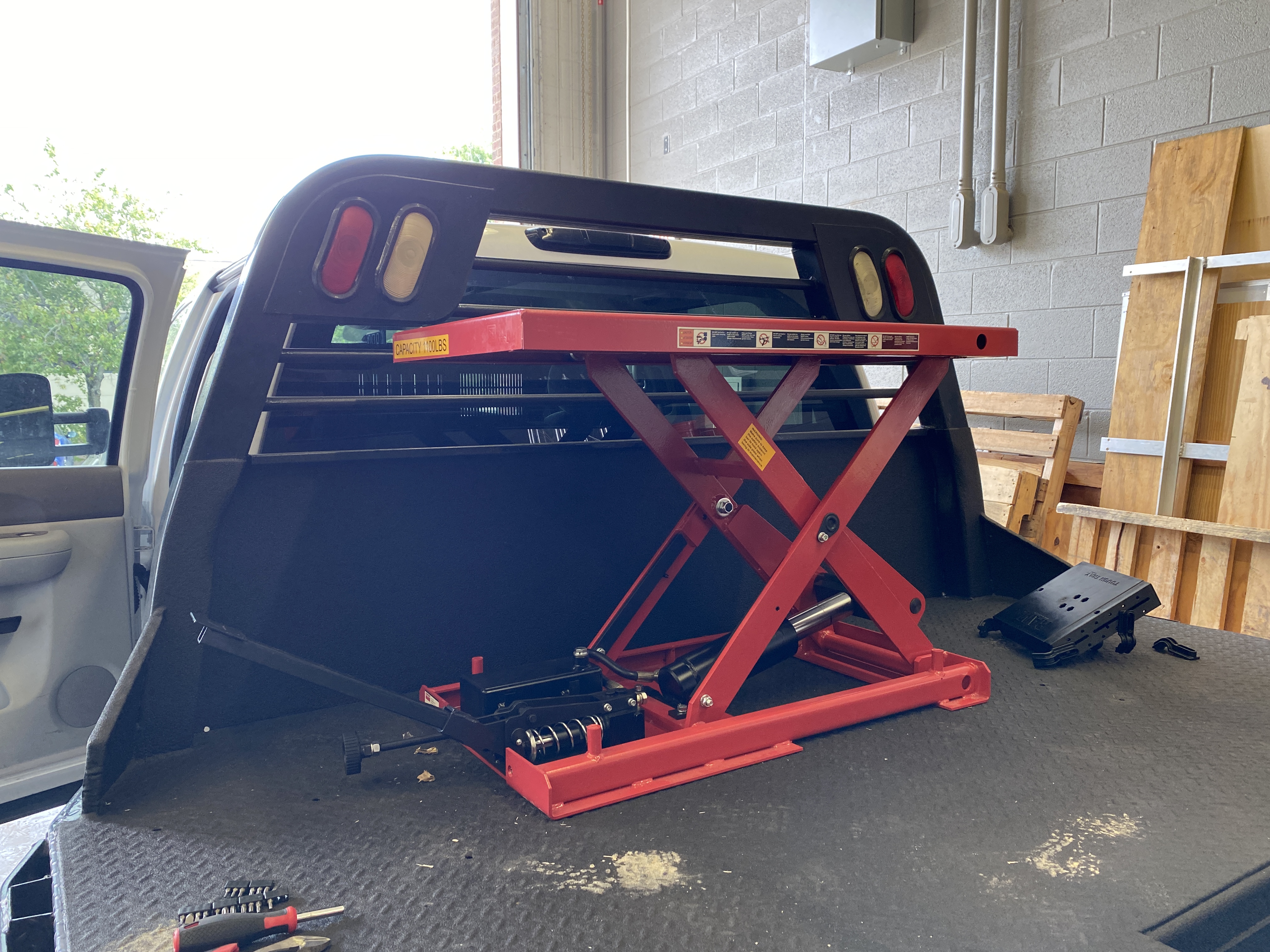
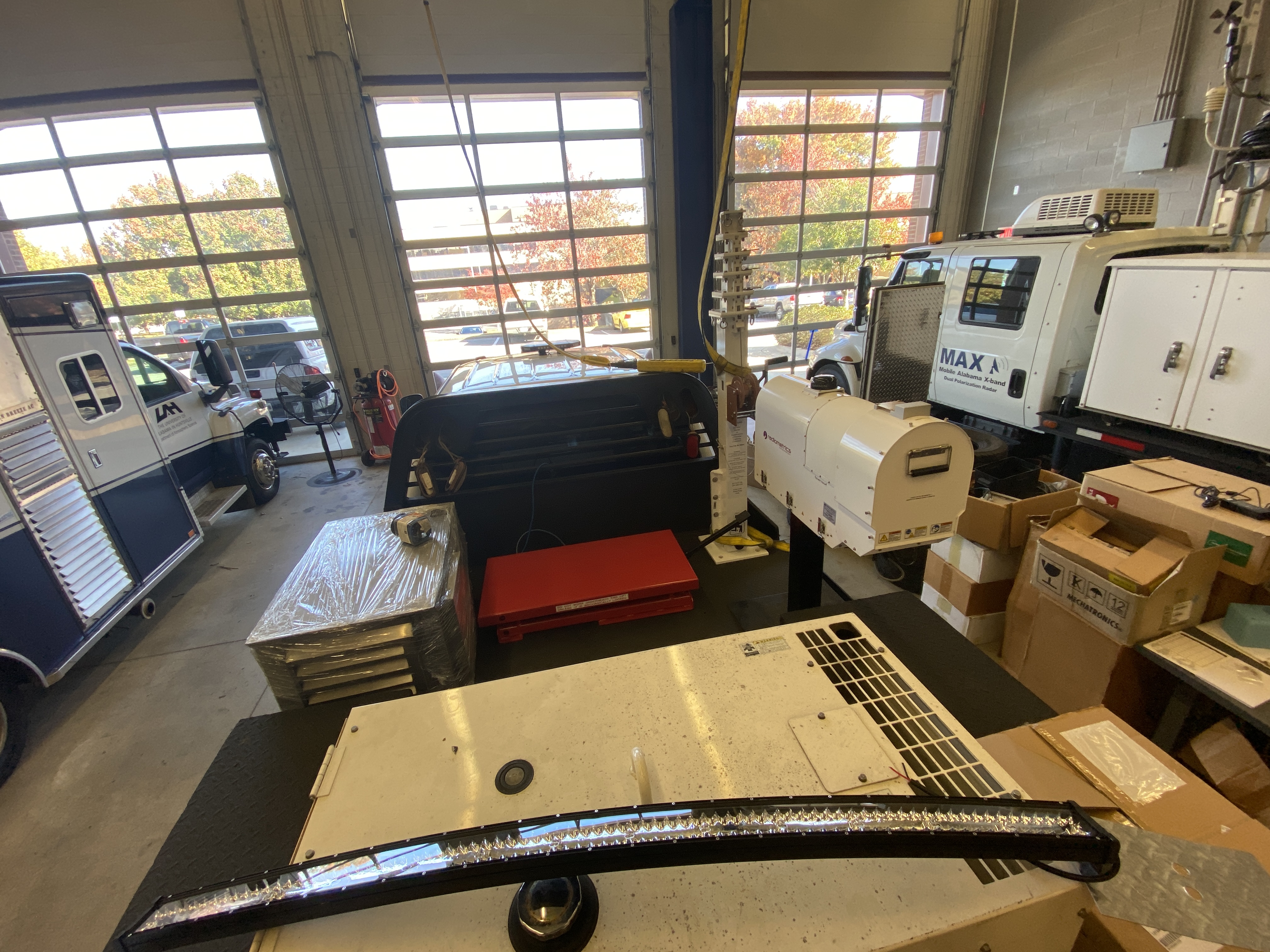
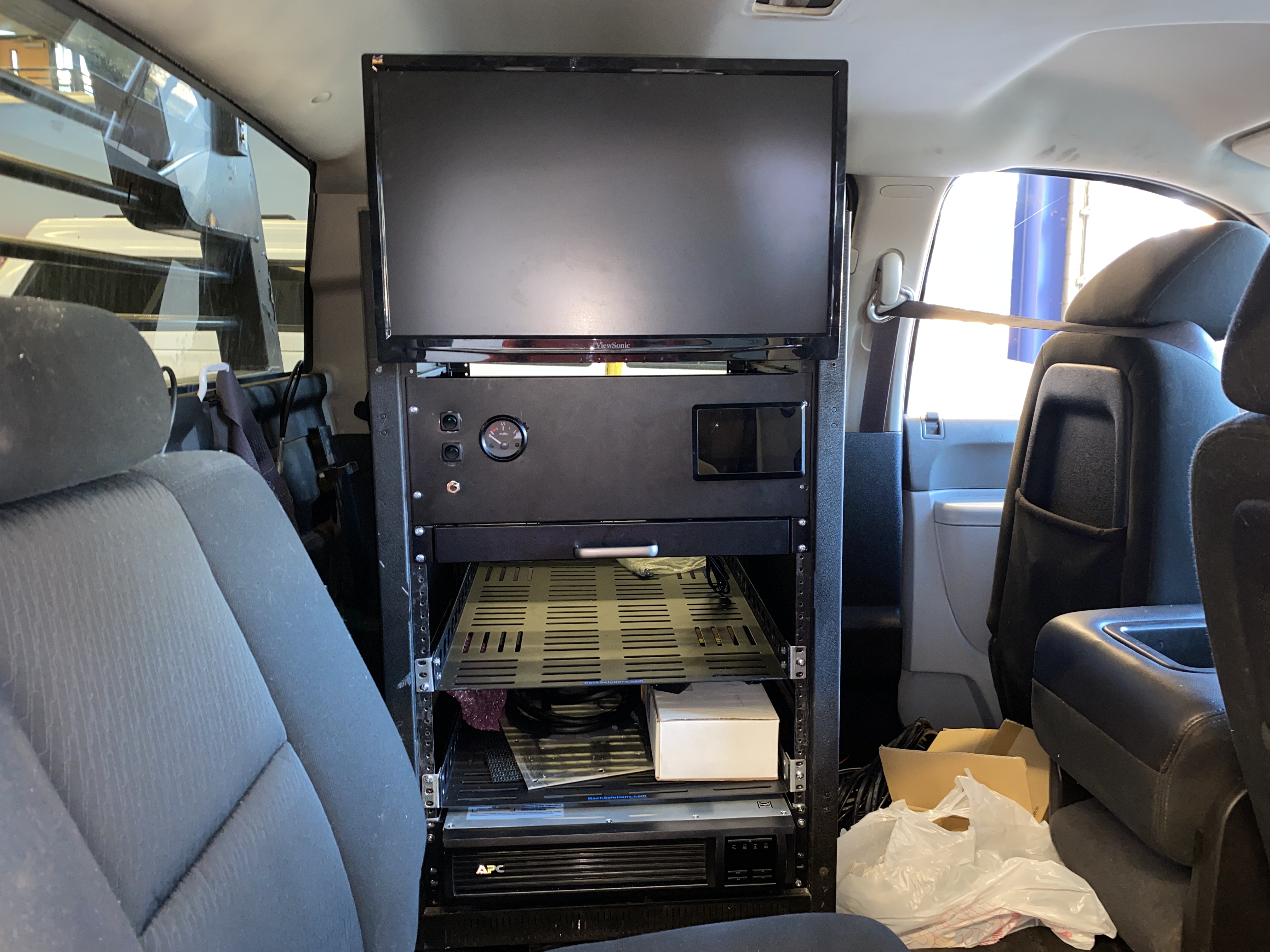
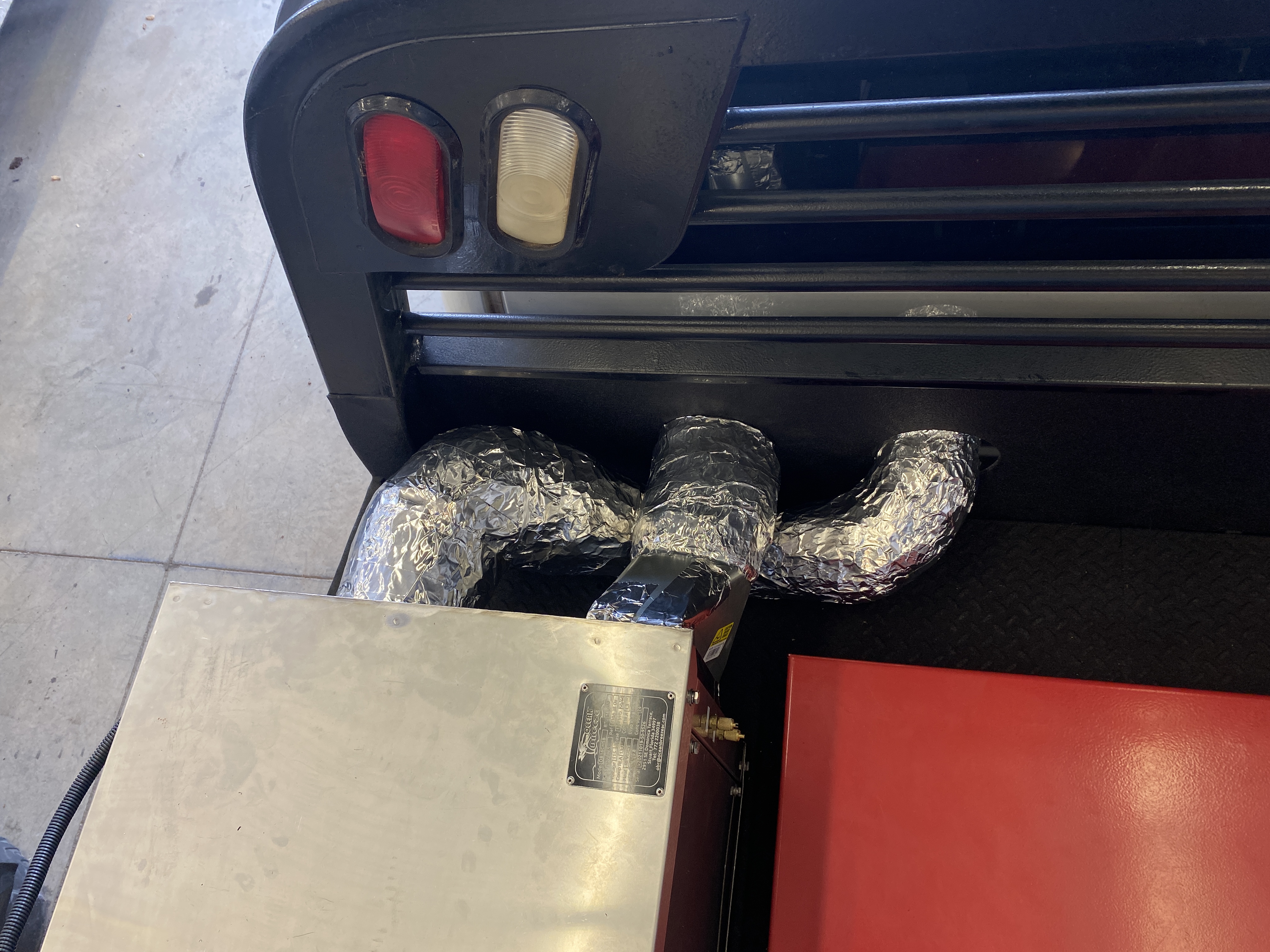
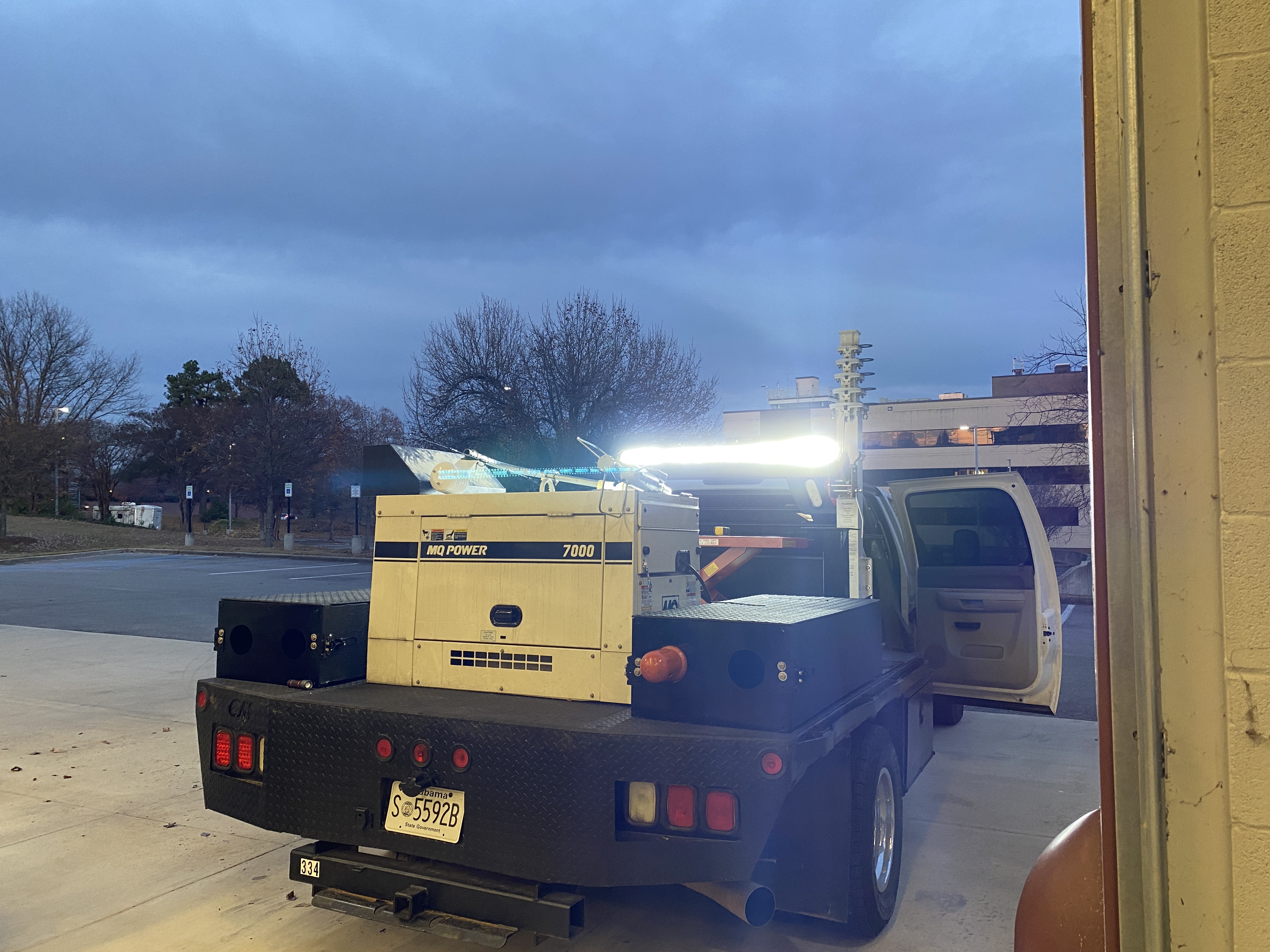

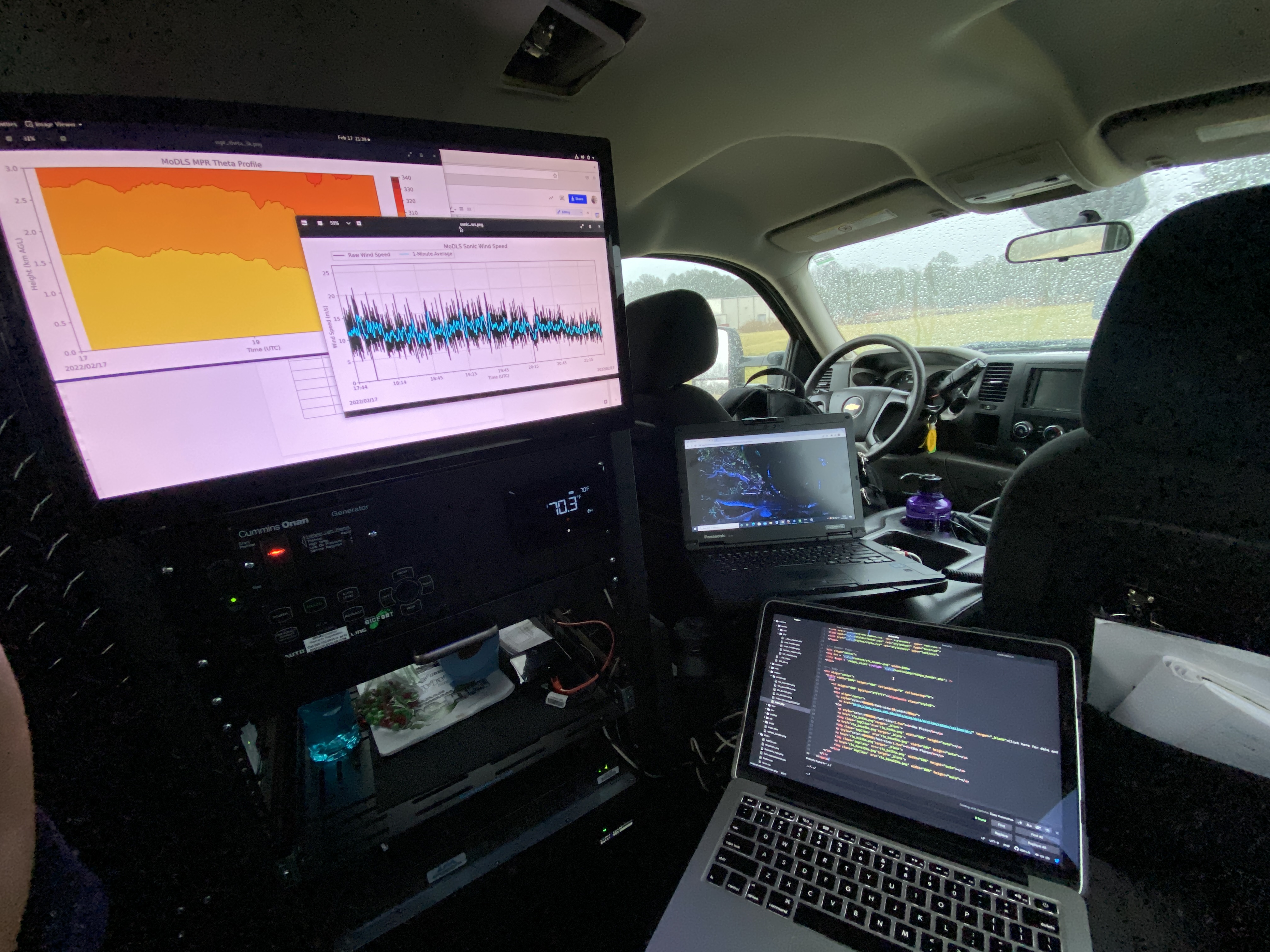
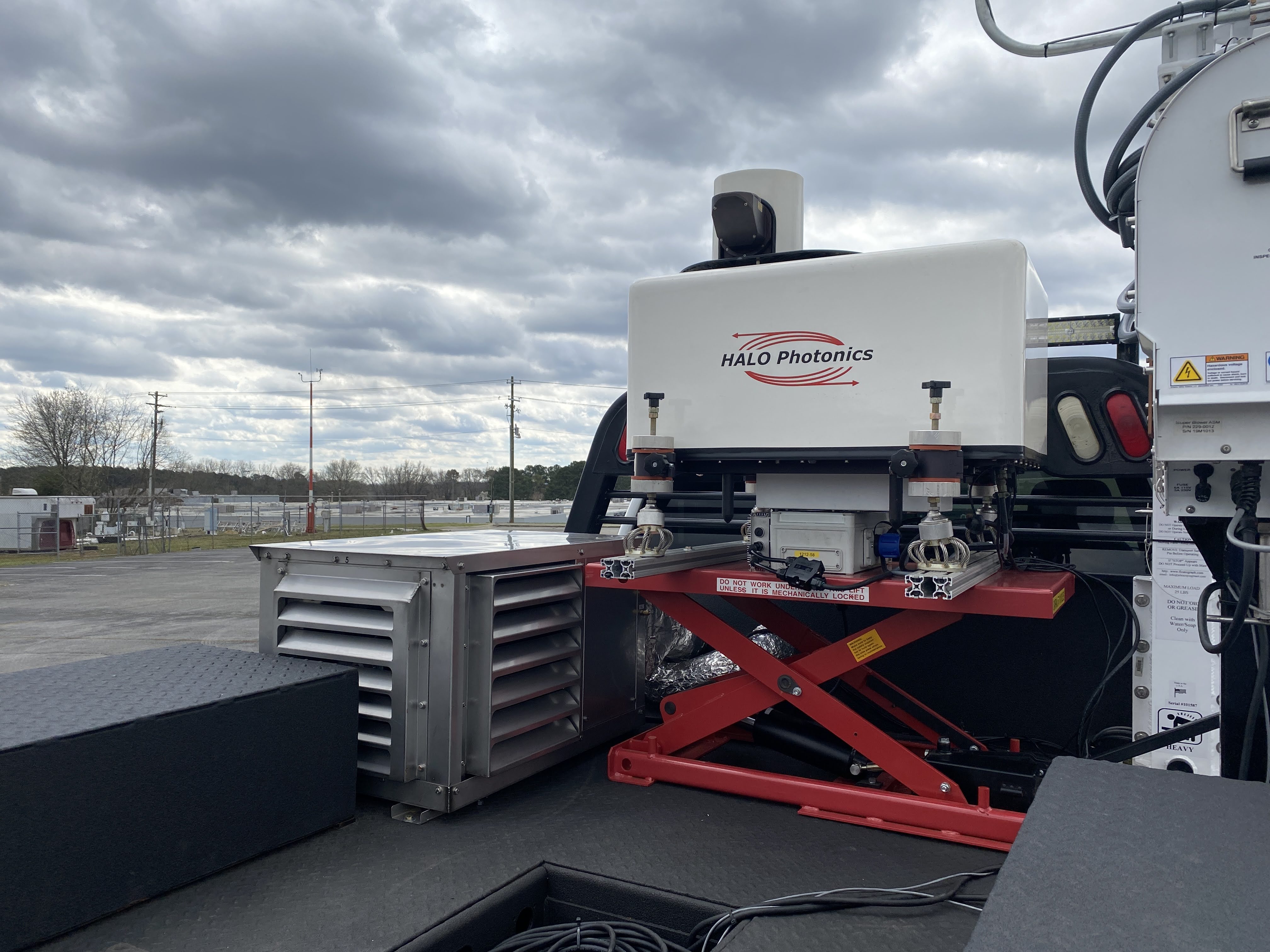
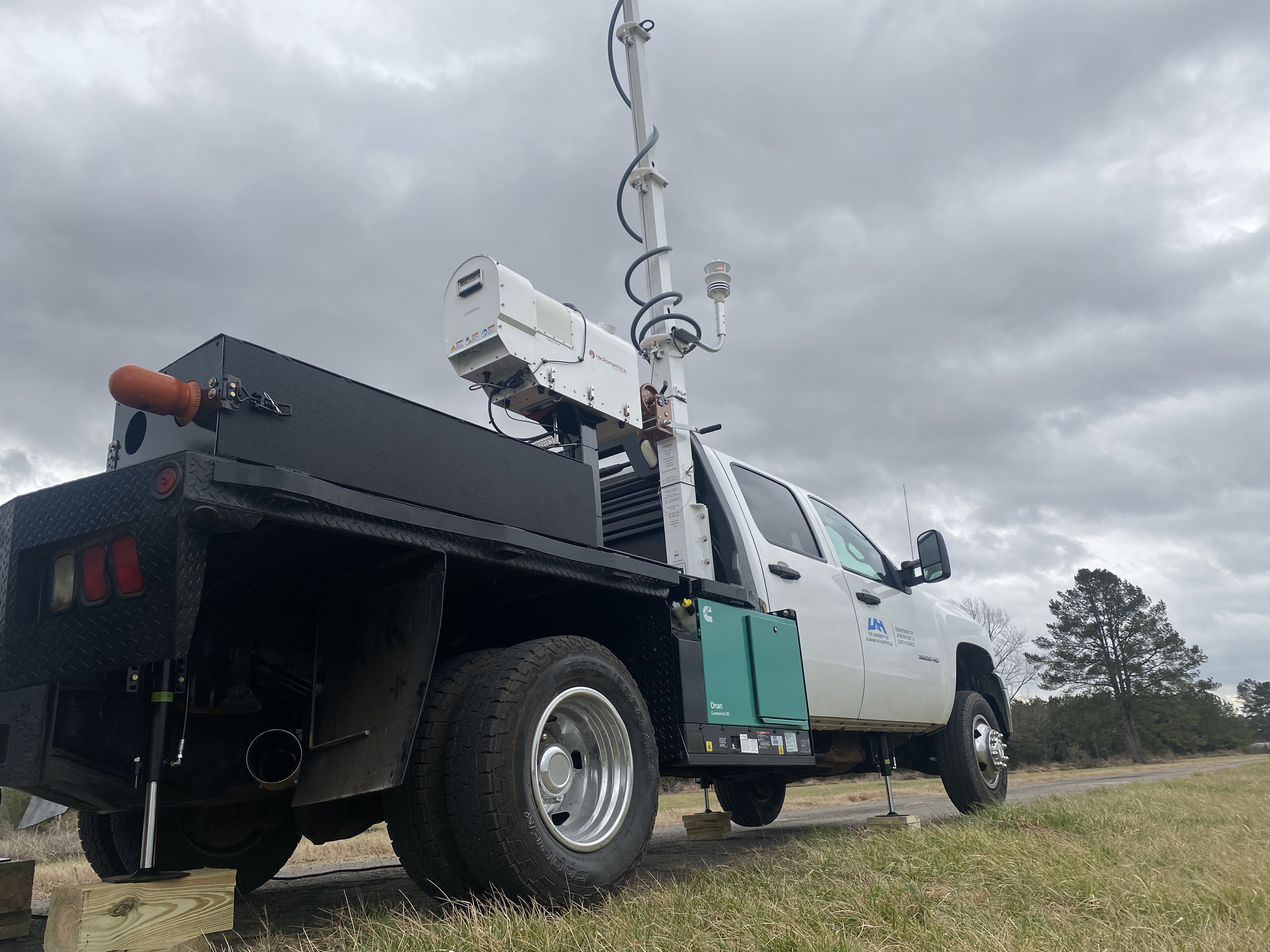
Leveling jacks working their magic leveling the truck in the field. 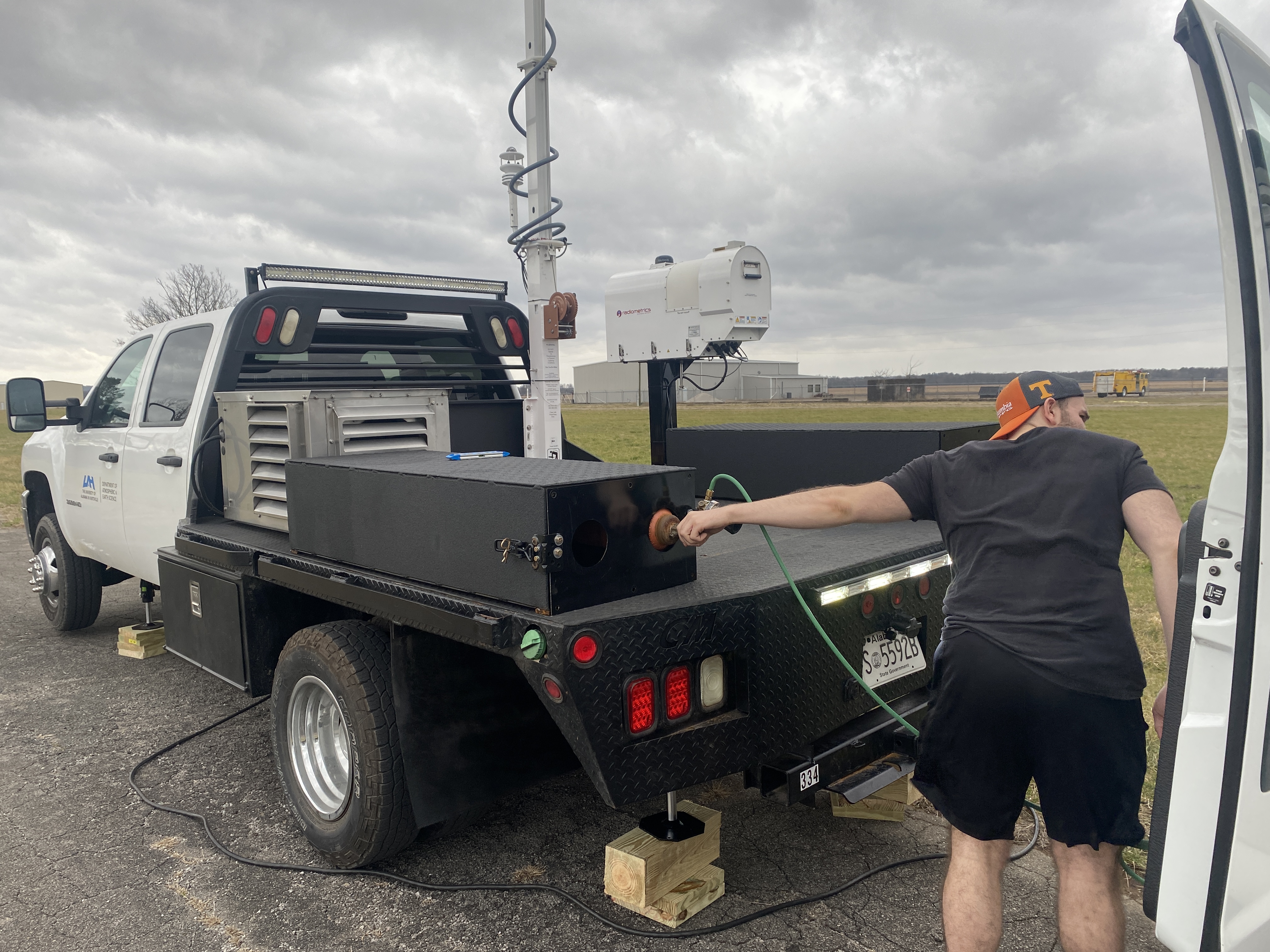
Prepping balloon soundings out of MoDLS in support of PERiLS. |

